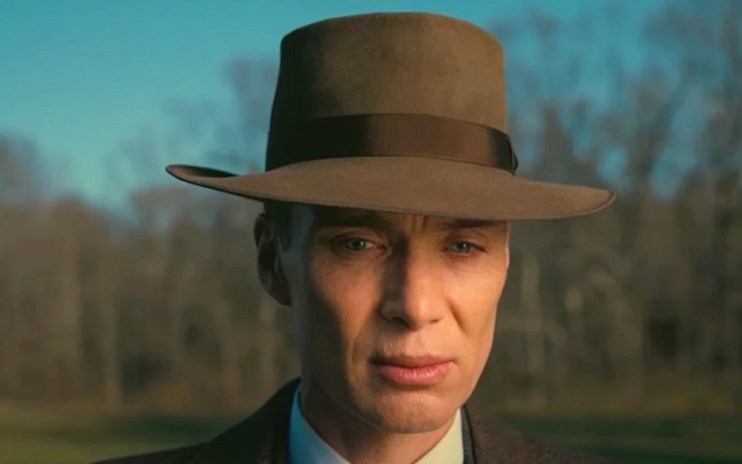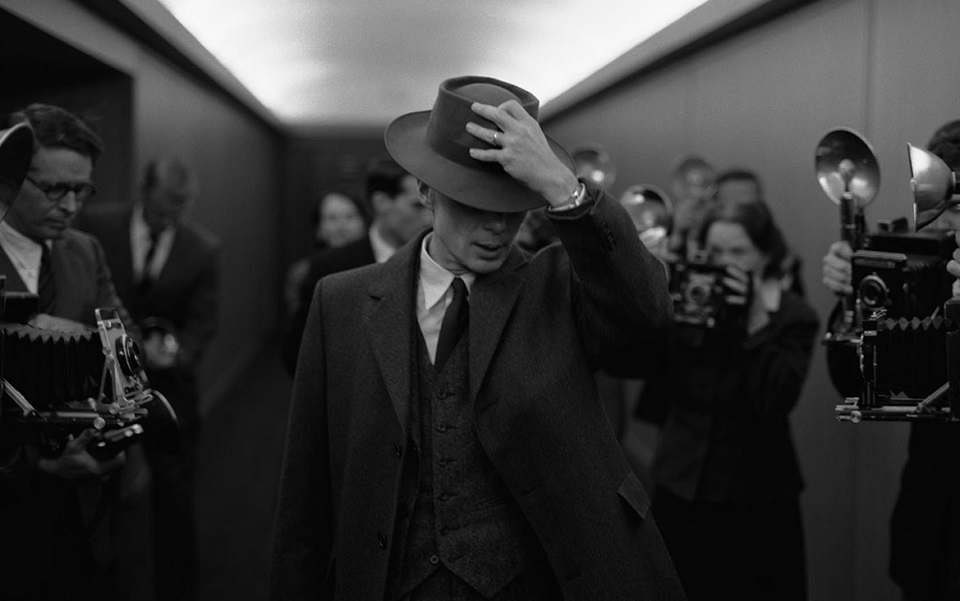Oppenheimer review: Cillian Murphy is career-best in Christopher Nolan’s atomic hit

Oppenheimer review and star rating: ★★★★
Well, here you have it: all three hours of Oppenheimer are finally ready for your consumption. Directed by directorial titan Christopher Nolan, nobody really likes being in the cinema for three hours, do they? Well, sometimes they do, but only when the film is very very good, and Oppenheimer is just very good. In short, dear reader, as you might expect, and as is typical of these monstrous films, Mr Nolan should know that a forty-minute chop would have done the trick.
Forgetting a forty minute segment in the middle in which various middle aged white men sit in similar-looking board rooms discussing an espionage case in a way that’s more verbose than Russell Brand after a good night’s sleep, Oppenheimer is well worth developing posterior aches and pains for.
Cillian Murphy, playing the seminal role of his career, absolutely smashes it as Oppenheimer, the socialist-leaning physicist who led the charge on developing the atomic bomb in the 1940s. His advancements in atomic weaponry were the intellectual driving force behind the bombings of the Japanese cities of Hiroshima and Nagasaki in 1941, bombings which cost over 150,000 civilian lives. Oppenheimer’s story is familiar – a TV series and theatre show have riffed on him – but Nolan elevates his story with a detail-oriented film that brilliantly captures Oppenheimer’s human essence: his particular struggle with power that saw the scientist eventually ostracised by the US political system, effectively cancelled for suggesting that further research on atomic weaponry might be immoral.

Nolan starts gently, with a rousing autobiographical trip through Oppenheimer’s youth, studying at Cambridge, then a research placement in Austria with Heisenberg, the German Jewish-critical quantum physicist and peer who would oppose Oppenheimer in his race to atomic warfare. Murphy’s Oppenheimer is an eminently watchable gent, a likeably earnest scientist who disrupts the physics community by displaying his socialist politics in the science lab. There are echoes of A Single Man about his vulnerability, displayed for example through the much-hyped sex scenes with Florence Pugh’s socialist character Jean Tatlock, which although fun don’t feel like they needed to exist. In fact, they are a bellwether for how at times Oppenheimer is sometimes too sentimental.
Mostly though, Nolan’s piece has the stench of gunpowder about it from the get-go. It is a frenetic watch, all too-close close ups on the forever self-questioning scientist, and uncomfortably staccato scene cuts to ramp up energy.
Fast-forward through the aforementioned dry bit, and we’re heading towards what we’re all here for: amazing imagery of an exploding atomic bomb. We get it: on the big screen, the scope of the howling winds and fiery shrapnel created by the explosion, symbolic of what would take so many lives, is cleverly displayed singularly, without distraction, for a decent amount of time. Through hugely detailed, lingering shots of fire, Nolan conveys the sense that history had changed in this one moment at 5.30am one morning. As for the deeper physics, that’s pre-explained throughout the film with impressive graphics displaying the complexities of quantum physics.
There’s been a faithful commitment to recreating exactly how it would have looked in the New Mexico desert where the Los Alamos atomic testing site was set up ahead of the nuclear test in July 1945. The detail brings the menace of that fireball to life. It’s fascinating to watch how Oppenheimer’s staff laid on futons on the desert floor in the pre-dawn, facing away from the bomb, and watching for the explosion to mirror on the mountains in front of them before it would be safe to turn around, with goggles on, to view the mushroom cloud. Some wore sun cream. There is this desolate dystopia, and then the brilliant red of the explosion.
Then Nolan shifts gear again as the character assassination element of Oppenheimer dictates the flow of the final third. Robert Downey Jr, who has perfected his snake-like anti-hero energy with his portrayal of Lewis Strauss, the American businessman who effectively stabbed Oppenheimer in the back, gets a delicious amount of camera time. Shots often turn a granular grey, effectively haunting the cinematography, making it look possessed by the ghosts of the 1940s. You could write another piece about how good Downey Jr is at playing menacing.
The supporting cast become a story in themselves, with every scene revealing another famous face. Rami Malek is gripping as Oppenheimer ally David Hill, who delivers the most touching testimony of the scientist, and then there’s Emily Blunt, at her career best and adding real emotional heft where the sex scenes couldn’t, as Oppenheimer’s exasperated wife Kitty. Oh, and the most memorable of all, from veteran British actor Tom Conti, is an arrestingly lifelike Albert Einstein in his later years. Nolan’s script (he wrote that too) keeps these historical pillars feeling authentic, without drifting into caricature.
That same script, ironically, is Oppenheimer’s biggest weakness: there is too much of it. And too many supporting characters, and star appearances, to count, and take in. Yet, Nolan rightly deduces that Oppenheimer’s plight should be seen alongside the tragedy of other wronged wartime figures like Alan Turing. And how thrillingly done it is.
Oppenheimer is in cinemas on Friday 21 July
